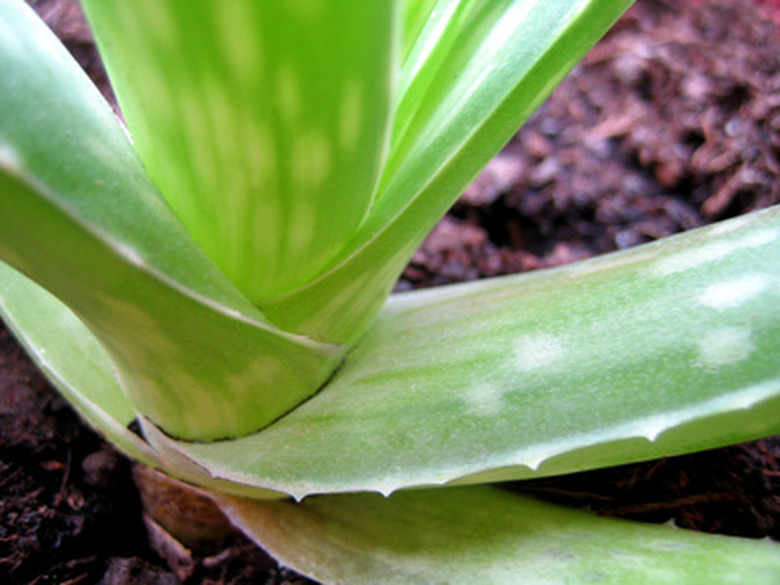Care Instructions For Aloe Vera Plants
Things Needed
- Watering tool
- Sandy soil or commercial cactus potting mix
- Terra-cotta pot (optional)
Aloe vera plants (Aloe barbadensis) are well known for the medicinal value of the juice of the leaves, but these plants have the added benefits of being attractive and easy-to-grow, according to information published by the University of Florida. Aloe vera plants can be grown in a container or outdoors in the proper climate. These slow-growing succulents are very hardy and will reach an average height of about 18 inches if given proper care.
Step 1
Choose a location for your aloe plant that has some sun but is protected from strong afternoon rays, which can scorch the delicate leaves of the plant. A south-facing window works well, or outdoors in a site that is exposed to morning sunlight and dappled afternoon shade. Aloe will also grow in full shade, which is a good choice for the hottest growing zones but not for indoor plants.
Step 2
Provide sandy soil for your aloe vera plant. While it can adapt to most types of soil, including clay or loam, it grows best in sandy, well-draining soil, according to information published by the University of Arizona. Any commercial mix marketed for cacti will work well.
- Aloe vera plants (Aloe barbadensis) are well known for the medicinal value of the juice of the leaves, but these plants have the added benefits of being attractive and easy-to-grow, according to information published by the University of Florida.
Step 3
Keep the plant warm. Freezing temperatures will damage or kill aloe vera plants. Indoor plants should be kept away from cold drafts.
Step 4
Water when the soil dries out. This plant is highly drought-tolerant, but it will grow best if given regular waterings so do not let it sit in dry soil for too long, according to the University of Florida. Water container plants until the pot drains freely, then empty the water-catch tray immediately. Over-watering may cause the plant's leaves to turn soft and yellow.
- Freezing temperatures will damage or kill aloe vera plants.
- This plant is highly drought-tolerant, but it will grow best if given regular waterings so do not let it sit in dry soil for too long, according to the University of Florida.
Step 5
Monitor outdoor aloe vera plants for caterpillars, which will chew holes in the leaves but not threaten the life of the plant. There are no major problems with insects or diseases, according to the University of Florida.
Tip
Aloe vera can be planted outdoors in United States Department of Agriculture growing zones 9 through 11, according to information published by the University of Florida. Terra-cotta pots are a good choice for container plants, as they whisk water away from the soil. They should have drainage holes as well.
